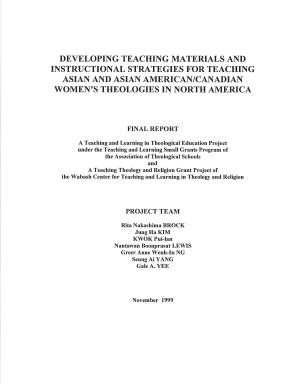Resources
Parker Palmer insists that there is a "capricious chemistry" to good teaching that is ultimately irreducible to a simple technical formula. He advises against making the student a spectator simply watching the teacher as he or she lays out a catalog of "objective" facts. Instead, the subject under study must get inside the student as the teacher facilitate the linking of the subject's insights with the student's own biography. Palmer cautions against the tendency to try to cover every fact in a field of study and suggests alternative methods of evaluating students that facilitates learning. Palmer believes that fear of conflict is one of the most significant obstacles to teachers creating hospitable space for shared discourse. Good teaching, Palmer claims, requires unusual courage as teachers must expose their ignorance along with their insight, remain open to contradiction as well as invite consent and relinquish some measure of control to a class so that the students are empowered.
Presents some maxims and an exhortation on leading discussion in a lecture course. Loneliness of lecturing; Discussion can feel light-weight and loose jointed; Different formats; Using discussion to break up lectures; Many excellent lecturers fear discussion; No real discussion occurs without some level of conflict or difference of ideas; Lecturers making the transition into discussion-leaders; Details.
The challenge is to reconcile the recommendations of the experts for involved learning with the reality of passivity that plagues large classes.
Techniques for initiating good discussion in class include: examining goals and values, noting concrete images in text, generating questions among students, finding illustrative quotations, small group discussion, generating truth statements, forced debates, role playing, non-structured scene-setting, and eliciting opinoins of the text.
Discusses how college teachers can deal with multiculturalism in the classroom. Faculty arguments over diversity requirements in the curriculum; Intercultural education among students of diverse cultures and ethnicities; Strategies for multicultural discussions.
Emotions in the Classroom Connections in the Classroom The Medicine Wheel in the Classroom References Appendix A
In this article, Dwight Boyd focuses on a dilemma that is at the heart of sincere commitments to cultural pluralism. When the moral aspects of cultural diversity are fully appreciated, the "dilemma of diversity" is revealed as the tension point resulting from the acceptance of the fact of "reasonable moral pluralism" conjoined with the perceived need to morally ground prescriptive intentions to promote cultural diversity within a democratic society. After discussing this dilemma, Boyd analyzes three perspectives commonly found in response. He argues that each of these perspectives is inadequate by revealing how it fails to come to grips with one or the other side of the dilemma, despite its surface appeal. He then shows how, in each of these perspectives, this failure functions to conceal and protect dominant points of view within the diversity. He concludes by sketching out a positive direction for successfully addressing the dilemma of diversity hinted at in the successes and failures of each of the three perspectives.

Analysis, resources, and recommendations by a colloquy of 7 Asian and Asian North American professors of religious and theological studies in largely white institutions. What impact does this isolation have on their functioning as faculty, and specifically in their attempt to introduce Asian or Asian North American perspectives into their respective theological disciplines? What extra constraints or requirements are placed on their struggle to teach as effectively and faithfully as they would like? And what about the dynamics of teaching primarily white or other non-Asian students?